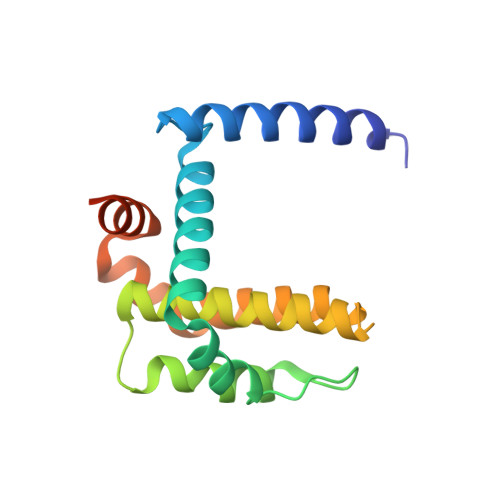Structure-Guided Development of Potent Benzoylurea Inhibitors of BCL-X L and BCL-2.
Roy, M.J., Vom, A., Okamoto, T., Smith, B.J., Birkinshaw, R.W., Yang, H., Abdo, H., White, C.A., Segal, D., Huang, D.C.S., Baell, J.B., Colman, P.M., Czabotar, P.E., Lessene, G.(2021) J Med Chem 64: 5447-5469
- PubMed: 33904752
- DOI: https://doi.org/10.1021/acs.jmedchem.0c01771
- Primary Citation of Related Structures:
6UVC, 6UVD, 6UVE, 6UVF, 6UVG, 6UVH - PubMed Abstract:
The BCL-2 family of proteins (including the prosurvival proteins BCL-2, BCL-X L , and MCL-1) is an important target for the development of novel anticancer therapeutics. Despite the challenges of targeting protein-protein interaction (PPI) interfaces with small molecules, a number of inhibitors (called BH3 mimetics) have entered the clinic and the BCL-2 inhibitor, ABT-199/venetoclax, is already proving transformative. For BCL-X L , new validated chemical series are desirable. Here, we outline the crystallography-guided development of a structurally distinct series of BCL-X L /BCL-2 inhibitors based on a benzoylurea scaffold, originally proposed as α-helix mimetics. We describe structure-guided exploration of a cryptic "p5" pocket identified in BCL-X L . This work yields novel inhibitors with submicromolar binding, with marked selectivity toward BCL-X L . Extension into the hydrophobic p2 pocket yielded the most potent inhibitor in the series, binding strongly to BCL-X L and BCL-2 (nanomolar-range half-maximal inhibitory concentration (IC 50 )) and displaying mechanism-based killing in cells engineered to depend on BCL-X L for survival.
Organizational Affiliation:
The Walter and Eliza Hall Institute of Medical Research, 1G Royal Parade, Parkville, VIC 3052, Australia.
















